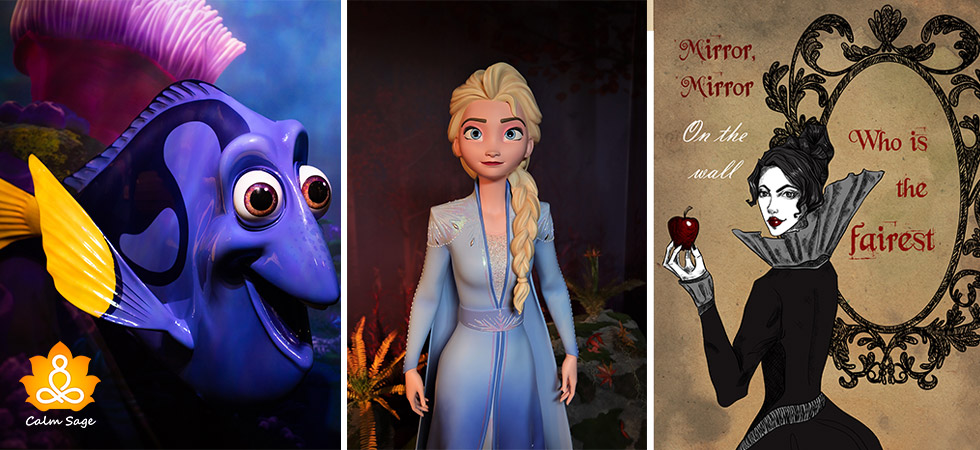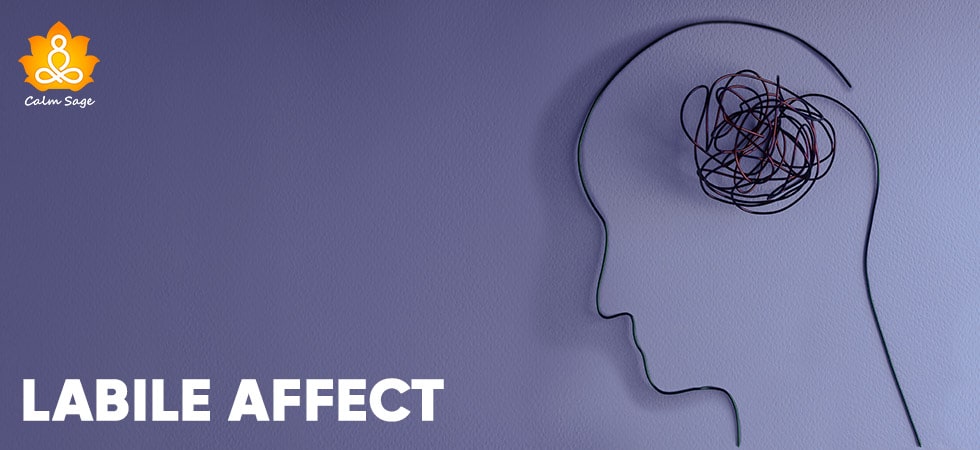Understanding Mental Health Disorders Through Childhood Animated Characters

Do you know what is common between you, me, and millions of people around the globe?
We all grew up watching Cartoon and Disney! You have to give me this one! Didn’t we use to wait to get back home after school to watch our favourite shows? They were so entertaining to watch! But back then we might have missed the psychoeducation that they had to provide (including me).
Well the good news is that we can still learn from them about life, love, relationships, and even mental health disorders! Yes you read it right! We can learn about different mental health conditions by animated characters.
Animated Characters and Mental Health: Is There a Connection
While we often think of cartoon characters and Disney movies as platforms offering lighthearted content to us, they do have deep hidden meanings behind them. From giving us important life lessons and entertaining us (of course) these animated characters have also made it easier for us to understand mental health!
These animated characters with mental health disorders can help families and schools in terms of mental health by:
- Being a lighthearted medium to educate self and children about mental health issues.
- Offering a healthy way to destigmatize the stigmas around mental health.
- Starting a conversation about mental health.
- Allowing people to relate and find their way out. Especially for children who have a particular mental health condition, these characters can work as role models for them, pushing them to be themselves.
- Verbalising feelings and thoughts related to one’s mental wellness.
5 Disney Princesses And Mental Health Disorders
Let us start by learning about mental health issues that the most famous Disney princesses had.
1. Ariel and her Disposophobia
Character name: Ariel
Platform: The Little Mermaid
Mental Health Condition: Disposophobia/ Hoarding
Do you remember Ariel’s castle? She was a bonafide hoarder, not missing a single place or thing to add to her collectibles. She is always collecting things and becoming emotionally attached to them. On occasions when her collection is being destroyed, it causes the little mermaid extreme distress. These all signs collectively mark for disposophobia wherein you just can’t dispose of things.
2. Elsa and her Depression
Character name: Elsa
Platform: Frozen
Mental Health Condition: Major Depressive Disorder
Wait before you set out to argue with us, the directors of Frozen too made a statement on Twitter telling us that Elsa’s body language did show the signs of depression. Especially the song lyrics that go like “Don’t let them in, don’t let them see, Be the good girl you always have to be, Conceal, don’t feel, don’t let them know” speaks volume about princess Elsa’s mental and emotional condition. Her loss of interest in activities, cutting ties with her loved ones, and self-doubts do show signs of depression in her life. However, a strong support system does help her get through it!
3. Pocahontas and her Hallucinations
Character name: Pocahontas
Platform: Pocahontas
Mental Health Condition: Schizophrenia and Social Phobia
Yes, our brave girl and one of the strongest Disney characters possibly depicts two mental health conditions. Her conversations with the magical talking tree where she shares her strong hallucinations clearly marks the signs of schizophrenia. Apart from it, she was pretty much withdrawn socially. Neither did she interact much with her village people nor do they understand her completely. Perhaps she was more connected with mother nature!
4. Cinderella and her Dependency
Character name: Cinderella
Platform: Cinderella
Mental Health Condition: Dependent Personality Disorder
When was the last time Cindrella made any decision on her own? Well, no judgments here, as that is a sign of the mental health condition she was going through. Dependent Personality Disorder is marked by three major signs which includes feeling helpless, being submissive, and inability in taking care of themselves. Cinderella after losing her parents too felt helpless, was submissive of her step mother and sisters, and could barely take care of her! Although after interacting with her fairy Godmother she learned self-reliance to break through the dependency.
Interesting Fact: There is a Syndrome called Cinderella Syndrome wherein women fear their independence! They are constantly dependent on people around them for their emotional, physical, and financial needs.
5. Belle and her Stockholm Syndrome
Character name: Belle
Platform: Beauty and the beast
Mental Health Condition: Stockholm Syndrome
Falling in love with a kidnapper or the one who has prisoned you is often a plot in many movies. But did you know developing a psychological alliance with the captors classified for Stockholm Syndrome? Belle from Beauty and the beast too complies with its signs. Herein, the one who is hostage ends up forming a bond with the captors primarily as a survival instinct. This may later give rise to genuine positive feelings for the kidnapper.
6 Cartoon Characters and Mental Health Disorders
1. Tigger and his ADHD
Character name: Tigger
Platform: Winnie the Pooh
Mental Health Condition: Attention-deficit/hyperactivity disorder (ADHD)
I can hardly recall a time when Tigger sat peacefully with his impulses in control for more than 2 seconds! He was always on the go, bouncing from one place to another on his tail. His restlessness clearly shows that he has difficulty paying attention to things and his activity level is on the hyper side of the pole. Thank god he had a supportive support system to understand him!
2. The Evil Queen and her Narcissism
Character name: The Evil Queen
Platform: Snow White
Mental Health Condition: Narcissistic Personality Disorder
The Evil Queen’s obsession with asking the magic mirror to be the prettiest one in the kingdom clearly shows her deep need for admiration. Which when not fulfilled leads to feelings of jealousy and envy from her step-daughter. This quest of her being the prettiest and admired by all landed her in a murderous rage, which did not end quite well for her! But it definitely told us a lot about her fragile self-esteem that was highly vulnerable to criticism and her highest need of admiration, marking narcissism in her.
3. Scar and his Antisocial Personality
Character name: Scar
Platform: The Lion King
Mental Health Condition: Antisocial personality disorder (APD)
Scar’s need to be superior was coupled with his antisocial personality traits throughout the movie. He could not sense right or wrong to an extent where he planned the death of his own brother Mufassa. To top it all for the same he didn’t feel guilt or showed any remorse. Along with this, his cold behavior towards everyone exhibited his antisocial personality.
4. Maleficent and her Emotional Instability
Character name: Maleficent
Platform: Sleeping Beauty
Mental Health Condition: Borderline personality disorder (BPD)
Borderline personality disorder (BPD) is marked with inappropriate or extreme emotional reactions, unstable relationships, and highly impulsive behaviors. Maleficent from Sleeping Beauty does tick mark all of these boxes! From her highly impulsive entrance into the palace to her extreme emotional reactions like cursing the princess along with the kingdom, she typically showed all the signs of BPD.
5. Eeyore and his Depression
Character name: Eeyore
Platform: Winnie the Pooh
Mental Health Condition: Depression
Interestingly a study that identified the psychological implications of Disney Movies found out the depressive symptoms of Eeyore the Donkey in the movie Winnie the Pooh. The body language and dialogues of Eeyore clearly show the sign of depression-like persistent sadness and self-pity. But that’s not it. Winnie the Pooh also shows how you can be there for someone with depression.
6. The Queen of Hearts and her Bipolarity
Character name: The Queen of Hearts
Platform: Alice in the Wonderland
Mental Health Condition: Bipolar Disorder
The Queen of Hearts can either be too happy to make you a close associate of yours or too upset to chop your head off (there is no in-between). Her constant swings between being overly happy and excited and getting overly upset over the smallest things marks the signs of bipolarity. Well, this does not dismiss the fact that she was a creative head!
Pixar Characters and Mental Health Disorders
1. Mamá Coco and Dementia
Character name: Mamá Coco
Platform: Coco
Mental Health Condition: Dementia
Do you know almost 17% of people with age 71 and above have dementia and it is the most common neurodegenerative disorder experienced by them. The sad part is that it impacts the caregivers along with the older adults. Coco is a great movie to learn not only about dementia but also how caregivers can help their loved ones through it.
2. Marlin and his Anxiety
Character name: Marlin
Platform: Finding Nemo
Mental Health Condition: Generalized Anxiety Disorder
Marlin (father of Nemo) was always anxious for his son. From the starting of the movie you can see him panicking around for Nemo. On the day when Nemo went missing and his anxiety was at par, he fought off his anxiety by crossing the lane that he was most afraid of. Finally, his self-exposure therapy cum rescue mission did good to him by helping him find his lost son.
3. Dory and her Short-term Loss
Character name: Dory
Platform: Finding Nemo
Mental Health Condition: Amnesia or Dory Syndrome and ADHD
Dory the kind-hearted soul who is always there for her loved ones showed signs of ADHD, she was always hyper and inattentive of everything going around her. The ADHD experienced by her further gave rise to her short-term memory loss (a common issue among adults and children with ADHD). She could barely remember the names of the fishes or ways to swim by, but her confidence and independence made her the strong headed fish she was!
Special Section: Mental Health Conditions Named After Disney Characters
1. Alice in Wonderland Syndrome
Character name: Alice
Platform: Alice in Wonderland Syndrome
Mental Health Condition: Alice in Wonderland Syndrome
If you were wondering why Alice was not mentioned in any of the lists discussed above here is your answer. There is a mental health condition that is referred to as Alice in Wonderland Syndrome. Herein an individual may perceive everything either too big of its original size or too little of it. These distortions might be there for other senses as well.
2. Peter Pan Syndrome
Character name: Peter Pan
Platform: Peter Pan
Mental Health Condition: Peter Pan Syndrome
Although this Peter Pan Syndrome is not recognized by WHO, it is argued that the signs of this syndrome do exist (as supported by studies). Just like Peter Pan could not grow physically, in this syndrome an individual emotional growth is limited. To simplify, a person with Peter Pan Syndrome lacks emotional maturity and fears to take responsibilities.
3. Sleeping Beauty Syndrome
Character name: Sleeping Beauty
Platform: Sleeping Beauty
Mental Health Condition: Sleeping Beauty Syndrome
We all love our sleep but no one can beat Sleeping Beauty when it comes to the amount of sleep one can have. Interestingly, people do experience such long sleeping episodes wherein they only wake up to eat or to use the bathroom. Other times, they are either too drowsy to do anything or are just sleeping! Ideally, this neurological disorder is referred to as Kleine-Levin Syndrome.
Honorable Mention: Inside Out
A movie approved and loved even by the mental health professionals (including me). How can we not add the movie Inside Out to our list when we are talking about mental health. I abide by the saying that emotions are what make us social beings, they drive our thoughts and behaviors.
But how many emotions do we know about? Two? Happiness and Sadness! But wait, there’s more and there is no better way to understand your emotions than watching the movie Inside Out.
The three important aspects of this Pixar movie that makes it a therapist preferred movie are:
1. It teaches an important lesson that there are no good or bad emotions. We need all of them to be there as a part of our life for our daily life to function.
2. Teenage emotions are important. Be there for your child, keep the channels of communication open, and help them work through emotions.
3. The amazing animation and the subtleness in which emotions are explained make it a great movie to understand some important aspects of our emotional wellness.
Author’s Note
Please do not use Disney movies or cartoon characters as mental health labels. Consider them as a source of edutainment and grasp as much information as you want. Instead of learning to label see how you can help someone who might be exhibiting similar signs. The change starts with you, so be the change you want to see!
Do you have any Disney or cartoon characters to add to our list? Share it with us in the comments section below. Let us explore together!
Do you know someone who is exactly like one of the characters that we have just discussed above? Be there for them and psycho-educate them to connect with a mental health professional to deal with their signs.
Thank you for reading!






































Beautiful article that supplies a lot of knowledge
Hey Dimi, Thank you for Appreciating us. We Feel Grateful to Help you.